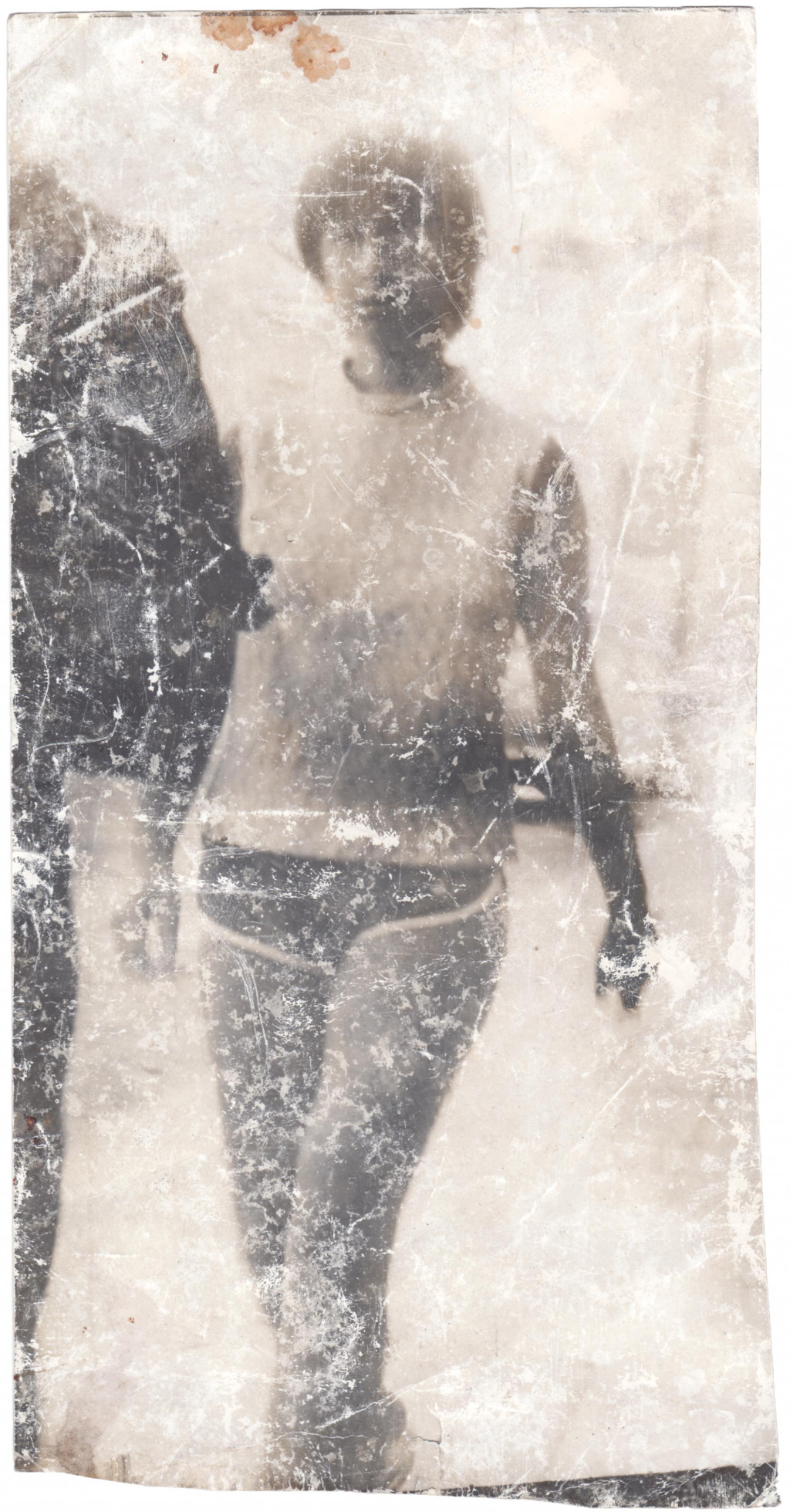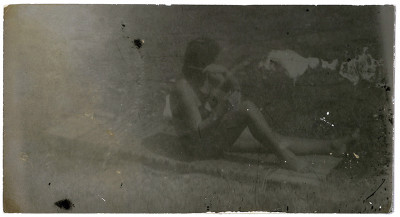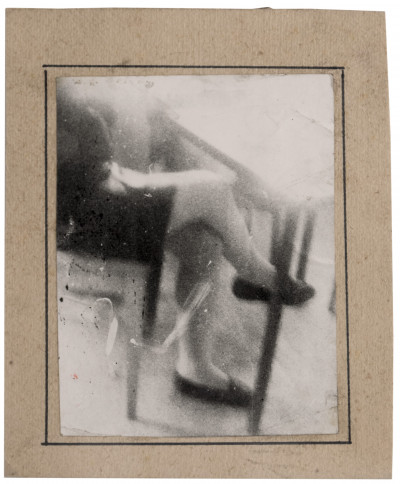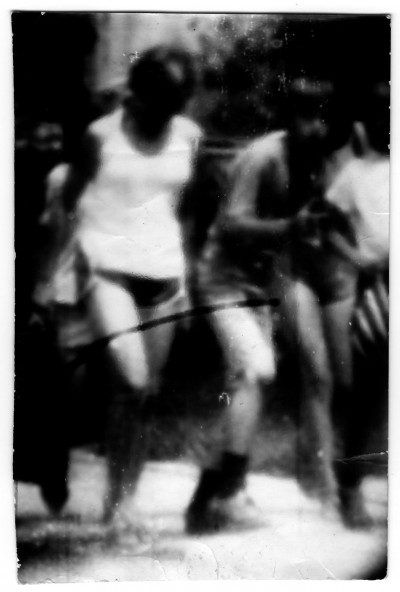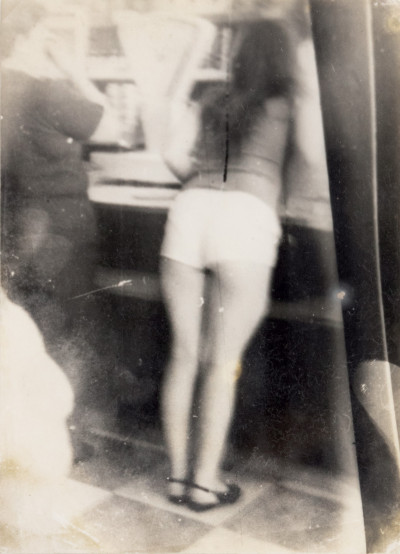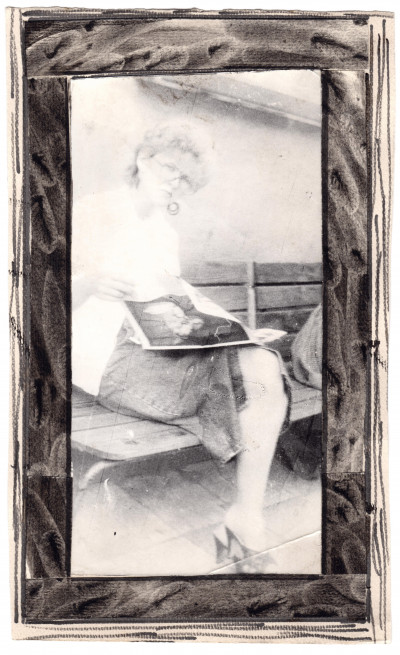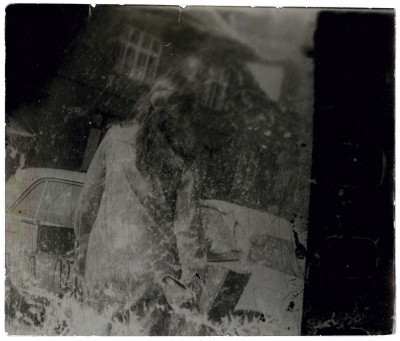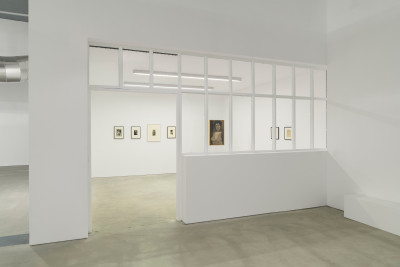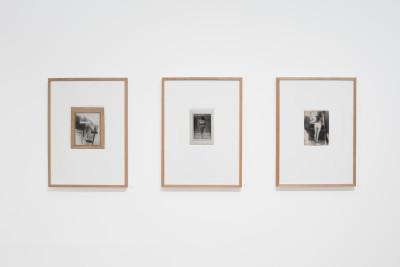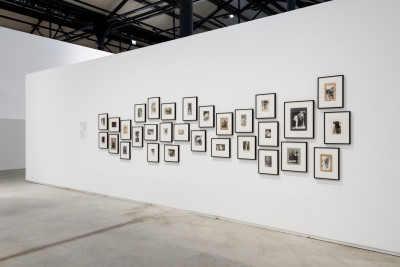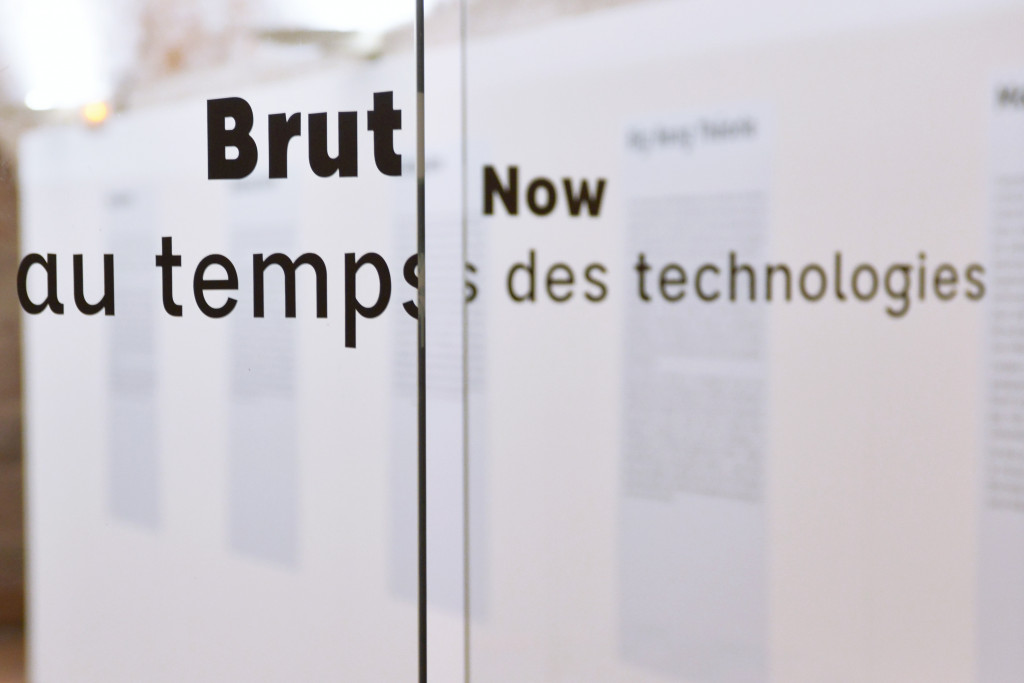Miroslav Tichý
Trained in academic painting, Tichý secretly engaged in photography only in 1970. Obsessive, if not fetishistic, he photographs women surreptitiously with the camera he built. His blurry photographs, sometimes enhanced with a pen border, are part of an immutable process, to which he adhered until the 1990s. Discovered by Roman Buxbaum, he was soon supported by Harald Szeemann. In 2005, he received the discovery prize at the Rencontres d’Arles and was given a major retrospective at the Centre Pompidou three years before his death. In 2019, he is again presented in Arles for the exhibition event, Photo brut.
Miroslav Tichý started his career as a painter marked with influences from Picasso, Matisse and German expressionists. The communist take-over in 1948 led him to go back to his hometown, Kyjov. He abandoned painting and, in the middle of the 50’s, took up photography, which he reinvented by building his own cameras with found materials: cardboard tubes, tin cans, optical glass polished with toothpaste and cigarette ashes…
For thirty years, in isolation, he took dozens of pictures daily, either over or under exposed, with women of Kyjov as his principal and obsessional subject. He developed his photos however possible, retouching them with a pencil. His voluntarily marginal behavior brought him problems with the authorities. He was interned at psychiatric wards multiple times and ended up being evicted from his workshop in 1972.
His work, discovered at the end of the 90’s, was quickly recognized. The Centre Pompidou in Paris dedicated a retrospective to him in 2008.
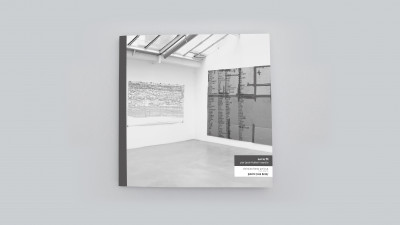
Preface : Jean-Hubert Martin
Foreword : Christian Berst
Catalog published to mark the exhibition On the wire, from April 9th to May 22nd, 2016.
